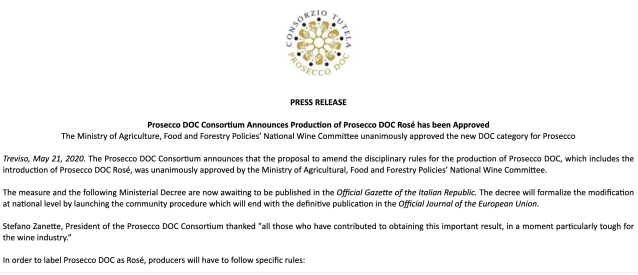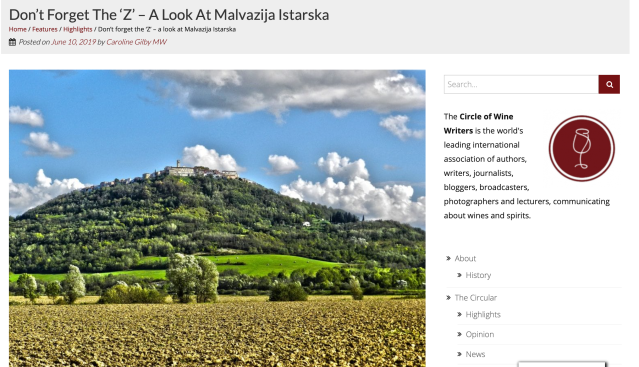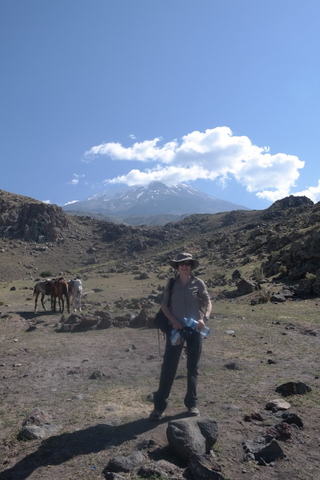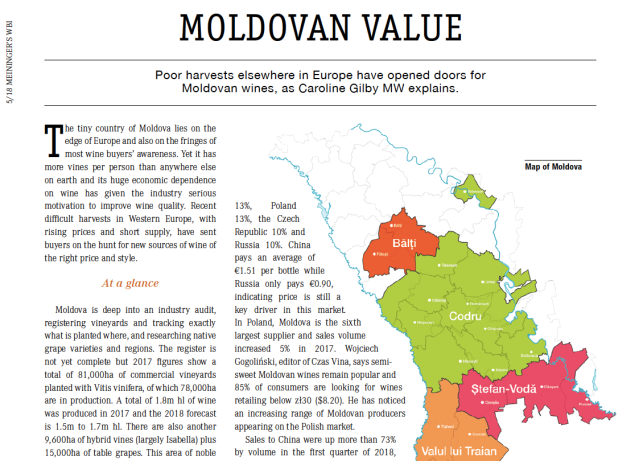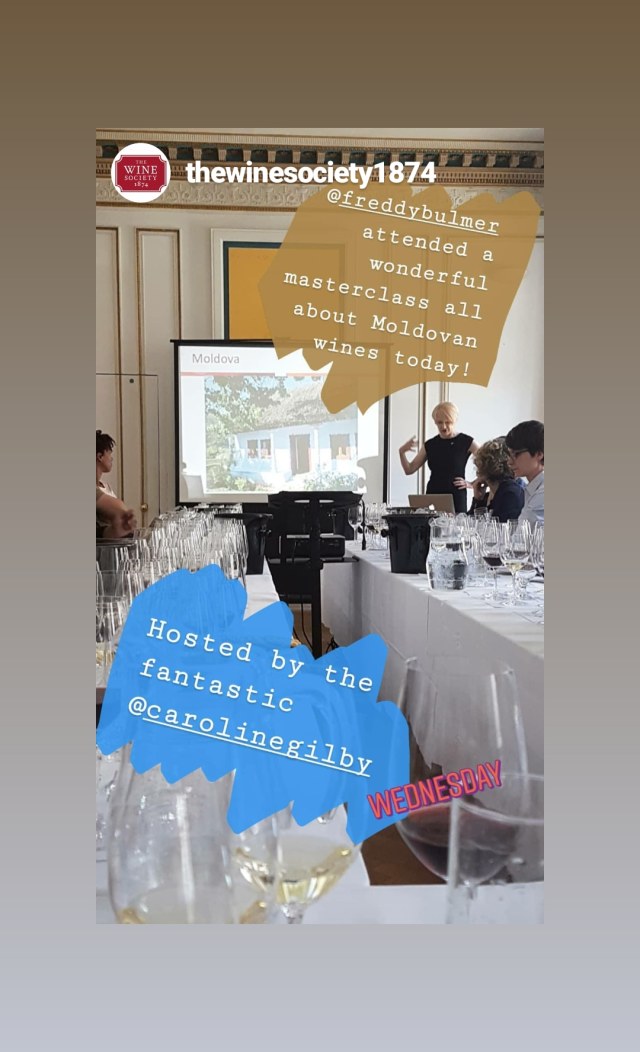This is an article I wrote for Revija Vino magazine after trip to this beautiful but usually overlooked corner of Slovenia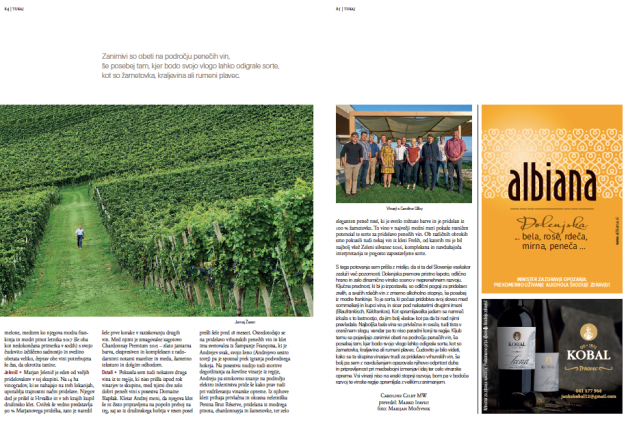
Published in Slovenian but English text below:
Mysteries of the East
Dolenjska seems to be a forgotten landscape as far as quality wine goes in Slovenia. It’s definitely overshadowed by Brda, Vipava and Štajerska in the minds of non-Slovenian visitors to the country’s vineyards. And for all my trips over the years to visit Slovenia, Dolenjska was one area I had never visited, with only a brief trip to neighbouring Bizeljsko-Sremič a few years back. This visit was a chance to remedy that gap and meet a group of seven family wineries.
I’m not sure what I was expecting to find, based on what little I knew and had tasted from the region – largely sour, sharp pale reds masquerading as wine under the name Cviček. And based on my usual assumption that wine needs a food culture to match it, I rather expected that food would be backwards and peasant-like too. How wrong I was – assumptions were definitely knocked on this small snapshot visit.
I have to start with Cviček as the region’s best-known product and the cash generator for so many producers. It reminds me a little in concept of Marmite, a savoury spread in the UK that you either love or hate, and certainly have to grow up (by the way, it’s a brown paste made from boiled-up leftover beer yeast and salt). I think Cviček is also a love-or-hate product that you have to grow up with. For anyone outside the region, even the well-made ones suffer from teeth-hurting acidity and searing dryness. At the same time, the grapes are picked too young to be fruity because of the low maximum permitted alcohol, and yet the wine is too structured to work as rosé. It’s a double-edged sword here, providing good income to producers, but it’s also a product with few real wine values. On the other hand, winemakers are starting to realise that it won’t last. Their core drinkers are getting older and will in time die out, while young people don’t want the traditional stuff their parents drank. And if these young people are travelling and educated, and picking up an interest in real wine then they will never turn back to Cviček. I actually don’t think it would take a lot to reinvent the product for a new generation, but that’s up to the producers to decide and lobby for legislation changes. If the grapes were allowed to ripen a little bit more to 11 or 11.5% alcohol, with a touch of residual sugar this would help give the wine actual fruit flavours, while a paler colour would also help make it saleable as a bright rosé rather than a insipid red. Oh and proper second fermentation for the sparkling version should become mandatory, with a ban on the “bicycle pump” method of adding bubbles.
The very first thing that struck me was what a beautiful, forested and green region this is, with dramatic hillside vineyards (covering around 4,000 ha), hilltop castles and picturesque villages. So it was particularly encouraging to hear that most of this group of producers are thinking about sustainable vineyards and several are working on organic methods and status. The second thing that struck me was the dynamic and exciting food culture and this is so important to allow premium wines to develop. Dinner at Debeluh was stunning, using local ingredients like trout, pumpkin, goat cheese, asparagus and mushrooms in an imaginative and beautifully presented manner (I don’t eat meat which didn’t seem to be a problem for any of the chefs who cooked for me) and well thought out wine pairings too from chef Jure Tomič. Gostilna Repovž provided a cosy base with a lovely breakfast spread of home-made and local ingredients (and who doesn’t love breakfast dessert of a strawberry praline in a white chocolate shell). Lunch and dinner here were equally stunning – with excellent trout, local vegetables and who knew that Brussels sprouts or green bean stew could be so good? To round off the trip there was a visit to Tri Lučke which has been beautifully renovated with stunning views across vineyards, comfortable modern rooms and excellent food with well-chosen wines.
So finally to the wines. I love the very personal family stories of these winemakers and it was clear that all are genuinely family endeavours. Each winery I tasted with had something interesting and even exciting to offer and I have to admire their bravery in opening themselves up to honest feedback from a foreigner (though this in itself is a good sign of willingness to progress).
Starting with Žaren, this winery is owned by Jernej Žaren, along with his wife, parents and children – the initiator of this group project. The winery has stunning vineyards on gently rolling hills and a 300-year-old cellar where the steel tanks had to be welded together in situ as they wouldn’t fit through the doors. He even has two casks made from an oak tree that grew in the same vineyard as his Modra Frankinja. It was a first for me to taste a wine aged in oak from the exact location where the grapes are grown. He has recently updated his branding – naming his wines after his grandparents Ana and Albin to create Albiana. A nice concept that is based on authentic family history but is also appealing and easy to pronounce in any language. He makes an attractive and very drinkable Laški Rizling and lovely vibrant rosé, there are also appealing and competent Silvaner and Chardonnay. The entry-level Modra Frankinja is a modern, refined, elegant style with loganberry fruit and violet hints. The premium Alto Modra Frankinja 2016 has lovely fruit, classic structure and excellent varietal expression, and though young, is very promising.
Kobal wines (not to be confused with Janko’s brother in Štajerska) counts its founding back to 1931 when Janko’s grandparents escaped Mussolini and left the Vipava Valley for this region. Janko and his wife Andrea both have other jobs but clearly adore their 2 ha of vines, “We love it and find it creative after a hard day working,” says Andrea. The couple took over 12 years ago, and from the start premium wines were their aim, focusing on Sivi Pinot and Modra Frankinja as their two favourite grapes. All the wines they showed were good but their Luna selections of the best grapes were particularly exciting. Gently macerated Sivi Pinot showed spice, intense and bright peach flavours and salty freshness on the palate, while the 2016 Luna Modra Frankinja is genuinely exciting – an elegant wine full of bilberry and black cherry fruit, beautifully refined tannins and lovely freshness.
David Kozinc was bored just making Cviček and when his father told him that he’d never sell premium wines David took this as a personal challenge. The first vines were planted here in 2001 and there are now 10 ha ranging from 380m to 500m. David himself finished agricultural school in 2007 and went to work in France’s Saumur region before coming back to take over the family business, alongside his parents and wife. Importantly he has started to think about clones, wine style and micro locations in vineyards. He has a true passion for Sauvignon Blanc which shows in the lovely aromatic expression of his 2017 version which has a style that is distinct from other regions in Slovenia with its concentration and texture, backed by vibrant zesty acidity. There is also a fresh and appealing Modra Frankinja and a fruity, off-dry, summery rosé.
Bogdan Dular started 23 years ago with a small bar selling wine, and along with his parents, they saw an opportunity to sell their own wines from their own vines. Bogdan gradually realised that better quality was the future. He has also now stopped using herbicides and pesticides and feels this is the right decision for his beautiful region. He started on premium wines in his 7 ha of vineyards only three years ago, so this is still work in progress. His Laški Rizling 2016 is in a traditional style but makes an attractive food wine with plenty of weight, while his Modra Frankinja Selection 2015 works well with its violet-scented, forest fruit notes, polished tannins and good balance.
Lojze Kerin discovered wine as early as primary school and nagged his parents (who were growing apples) to start growing grapes. He started making wine himself aged just 15 and while studying agriculture at university begged the professors to let him study wine and take winemaking exams. He’s another winemaker that is working on organic production and has a really spiritual approach to his winemaking. Maria Brut sparkling is named after his first daughter and is a biscuity, complex sparkling blend of Chardonnay with Kraljevina and Plavec, which gives an interesting local dimension. He makes eight different Frankinja versions, which unfortunately I didn’t taste, but I enjoyed his intriguing Klara 2012 – a really inviting expression of an orange wine, with lovely candied peel and peach notes. Lojze has retained bright fruit here through keeping barrels topped up and avoiding oxidation. For the future, Lojze has found a single vine of Tična in his vineyards (the parent of Modra Frankinja), and excitingly, he hopes to develop a wine made from an old plot he has found of this grape.
The Martinčič family has been making wine continuously for 200 years. They own 5 ha of their own vines for wine and a nursery that exports 90% of its grafted vines back to France. Owner Martin Martinčič is proud to have won the title of “King of Cviček” this year but at the same time sees this as a product with no real long term future. Given his viticultural skills, it is not surprisingly that he is thinking beyond winemaking to the vineyards, where rootstock choice, soils and micro location are on his mind. He already has several clones of Modra Frankinja to explore and travels to other wine countries regularly. Martin makes a fresh and crisp Laški Rizling with notes of lime peel and green melon from a plot of younger vines, while his 2017 Modra Frankinja and Pinot Noir (both unfinished barrel samples) look promising for their lovely purity of fruit and freshness, though both still need time to tame the tannins.
Marjan Jelenič is one of the larger producers in this group with 14 ha in three locations where he reports taking a sustainable approach in the vineyards. His grandfather came here from Croatia and bought the family cellar. Marjan’s business is still 90% Cviček so he is still taking early steps exploring other wines. Chardonnay Premium 2015 was the star here – a golden amber wine, expressive and complex with generous apricot and honey notes, velvety texture and a long finish.
I tasted a few other wines from the region weren’t part of this group, including a pair of very good sparkling wines from Domaine Slapšak. Cellarmaster Andrei Slapšak feels his cellar is not quite ready to show off yet as the business only became more than a family hobby 18 months ago. Making great sparkling wine is the focus here and the winery has consultancy from Champagne in the form of Andrei’s brother-in-law who met his wife through the game of underwater hockey. The Domaine even provides disgorging services for several wineries in the region and it seems that Andrei’s training as an electronic engineer also makes him quite handy at repairing winery equipment. There’s an attractive, appetising non-vintage Brut sparkling from Pinot Noir, Chardonnay and Žametovka, and a very fine pale pink fizz made from 100% Žametovka which really highlights the potential this grape has for sparkling wine. A couple of wines from Frelih appeared with meals and I particularly enjoyed the Silvaner 2016, a complex and exciting interpretation of this often disregarded grape.
I came away from this trip feeling that this is a region that deserves more attention. It’s genuinely beautiful with great food and a dynamic wine scene developing. Strengths include the ability to make ripe but fresh red wines, with moderate alcohol, especially from Modra Frankinja. This is a grape which is quietly gaining status among sommeliers and wine buyers under some of its other guises (Blaufränkisch, Kékfrankos) because it flatters rather than dominating food. Whites at their best are appealing and fresh, even as orange wines, but not so far the region’s flagships. However there seem to be exciting prospects with sparkling wine especially where local grapes such as Žametovka, Kraljevina or Rumeni Plavec can play a role. It’s exciting to see the efforts of this group of winemakers in focusing on premium wine, and even more exciting that these producers are open-minded and prepared to share ideas and even equipment. Not all are at the same stage of development, but I for one will be following this region with interest.
 The Start to my Career in Wine
The Start to my Career in Wine
